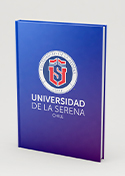Browsing by Author "Maynard Daniel S."
Evenness mediates the global relationship between forest productivity and richness
(2023/06/01) Hordijk Iris; Maynard Daniel S.; Hart Simon P.; Mo Lidong; ter Steege Hans; Liang Jingjing; de-Miguel Sergio; Nabuurs Gert-Jan; Reich Peter B.; Abegg Meinrad; Adou Yao C. Yves; Alberti Giorgio; Almeyda Zambrano Angelica M.; Alvarado Braulio V.; Esteban Alvarez-Davila; Alvarez-Loayza Patricia; Alves Luciana F.; Ammer Christian; Anton-Fernandez Clara; Araujo-Murakami Alejandro; Arroyo Luzmila; Avitabile Valerio; Aymard C Gerardo A.; Baker Timothy; Balazy Radomir; Banki Olaf; Barroso Jorcely; Bastian Meredith L.; Bastin Jean-Francois; Birigazzi Luca; Birnbaum Philippe; Bitariho Robert; Boeckx Pascal; Bongers Frans; Bouriaud Olivier; Brancalion Pedro H. S.; Brandl Susanne; Brienen Roel; Broadbent Eben N.; Bruelheide Helge
1. Biodiversity is an important component of natural ecosystems, with higher species richness often correlating with an increase in ecosystem productivity. Yet, this relationship varies substantially across environments, typically becoming less pronounced at high levels of species richness. However, species richness alone cannot reflect all important properties of a community, including community evenness, which may mediate the relationship between biodiversity and productivity. If the evenness of a community correlates negatively with richness across forests globally, then a greater number of species may not always increase overall diversity and productivity of the system. Theoretical work and local empirical studies have shown that the effect of evenness on ecosystem functioning may be especially strong at high richness levels, yet the consistency of this remains untested at a global scale.2. Here, we used a dataset of forests from across the globe, which includes composition, biomass accumulation and net primary productivity, to explore whether productivity correlates with community evenness and richness in a way that evenness appears to buffer the effect of richness. Specifically, we evaluated whether low levels of evenness in speciose communities correlate with the attenuation of the richness-productivity relationship.3. We found that tree species richness and evenness are negatively correlated across forests globally, with highly speciose forests typically comprising a few dominant and many rare species. Furthermore, we found that the correlation between diversity and productivity changes with evenness: at low richness, uneven communities are more productive, while at high richness, even communities are more productive.4. Synthesis. Collectively, these results demonstrate that evenness is an integral component of the relationship between biodiversity and productivity, and that the attenuating effect of richness on forest productivity might be partly explained by low evenness in speciose communities. Productivity generally increases with species richness, until reduced evenness limits the overall increases in community diversity. Our research suggests that evenness is a fundamental component of biodiversity-ecosystem function relationships, and is of critical importance for guiding conservation and sustainable ecosystem management decisions.
